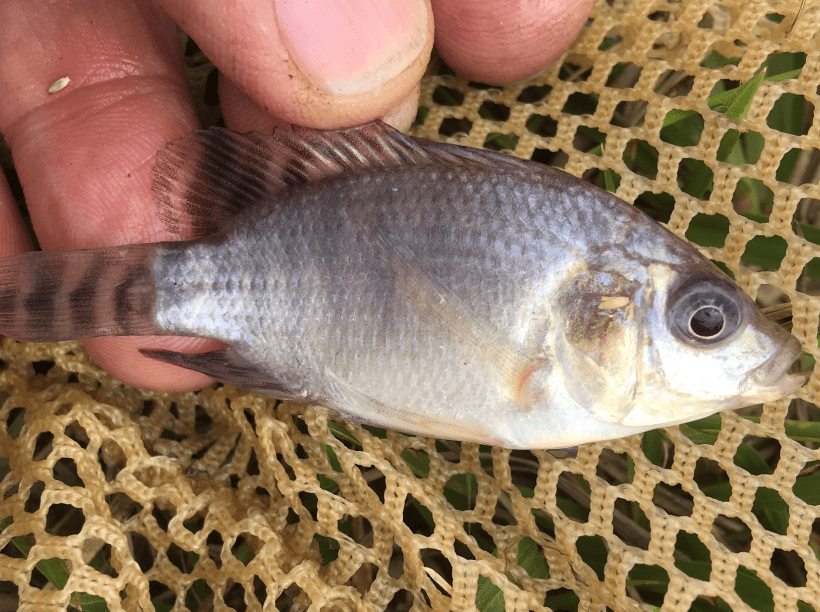Other names: Mango fish, Nilotica, Boulti
The Nile tilapia is a freshwater fish known for its adaptability and importance in aquaculture. It thrives in various habitats, including rivers and lakes, and has become a significant species for fisheries. Nile tilapia are characterized by their deep bodies, small heads, and distinct vertical stripes on the caudal fin. They are generally omnivorous, feeding on phytoplankton and algae. This species is widely farmed and has been introduced to many regions, sometimes causing ecological impacts.

Other names
Mango fish, Nilotica, Boulti
![]() Length
Length
~28" (max 60)
![]() Weight
Weight
~2" (max 5)
![]() Water
Water
Fresh
![]() Water Temp
Water Temp
8-42° F
![]() Depth
Depth
20 ft
Always open
No
-
-
-
No
-
-
Nile tilapia prefer warm freshwater environments such as rivers, lakes, and even man-made canals
They are capable of living in brackish waters, although they do not thrive in pure saltwater
These fish are primarily diurnal, actively feeding during the day on phytoplankton, algae, and sometimes insect larvae
Juvenile Nile tilapia are more omnivorous, consuming a variety of plant and animal matter
Nile tilapia reach sexual maturity within a few months, depending on water temperature, and reproduce when the temperature is favorable
Spawning occurs multiple times a year, with females incubating eggs in their mouths until they hatch
Males establish territories in shallow waters, where they dig simple nests to attract females for breeding
The species is known for its extended parental care, with females guarding the larvae in their mouths until they are ready to be independent